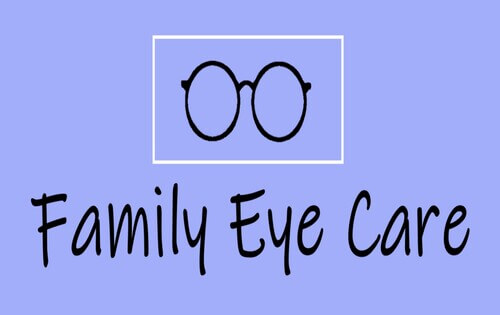The Benefits And Drawbacks of Different Refractive Surgeries for Enhanced Eyecare

LASIK Surgical Treatment
LASIK surgery is a generally executed refractive treatment that intends to remedy vision problems such as farsightedness, astigmatism, and nearsightedness. This surgical strategy has obtained popularity as a result of its performance in providing people with more clear vision and lowering their dependency on glasses or contact lenses. During the treatment, a thin flap is produced on the cornea, and a laser is used to improve the underlying cells, fixing the refractive mistake. The flap is then rearranged, enabling for quick recovery and very little discomfort for the person.
One of the key benefits of LASIK surgical treatment is the fast improvement in vision experienced by several individuals. It is important for individuals taking into consideration LASIK surgery to undertake a comprehensive evaluation by an eye treatment professional to figure out if they are suitable candidates for the treatment.
PRK Procedure
The PRK procedure, also recognized as Photorefractive Keratectomy, is a type of refractive surgical procedure that intends to correct vision concerns similar to LASIK surgery. Unlike LASIK, which involves creating a flap in the cornea, PRK works on the surface area layer of the cornea.
One of the advantages of PRK over LASIK is that it eliminates the threat of flap-related problems since no flap is created during the surgical procedure. This can be useful for people with slim corneas or those included in call sports where eye injury is a possibility. Nevertheless, the recuperation time for PRK is normally much longer compared to LASIK, as the outer layer of the cornea needs time to restore after the treatment. Despite the longer healing duration, PRK can be a suitable alternative for people seeking vision modification surgery.
SMILE Surgical Treatment
An advanced refractive surgical procedure method getting popularity in the area of ophthalmology is SMILE Surgery. Tiny Incision Lenticule Extraction (SMILE) is a minimally intrusive treatment that remedies vision by reshaping the cornea utilizing a femtosecond laser. Unlike standard LASIK surgical procedure, SMILE Surgical procedure includes developing a tiny laceration in the cornea to extract a lenticule, which leads to much less interruption to the corneal framework and possibly quicker healing times.
One of the key benefits of SMILE Surgery is its capacity to deal with nearsightedness (nearsightedness) and astigmatism with high accuracy, resulting in excellent aesthetic results for people. The minimally invasive nature of the treatment likewise lowers the danger of difficulties such as dry eye syndrome, making it a beneficial option for people looking for refractive surgery.

LASEK Technique
Having actually checked out the advantages and factors to consider of see here now SMILE Surgery, one more notable refractive surgery technique worth checking out is the LASEK Technique. LASEK, which represents Laser-Assisted Subepithelial Keratectomy, is a form of laser eye surgical treatment that aims to correct refractive errors such as myopia (nearsightedness), hyperopia (farsightedness), and astigmatism.
Unlike LASIK, find out here LASEK does not involve creating a corneal flap. Rather, throughout a LASEK treatment, the cosmetic surgeon uses a watered down alcohol solution to loosen the thin external layer of the cornea, referred to as the epithelium. This layer is then delicately moved apart to permit the laser to improve the underlying corneal tissue. As soon as the cornea has actually been reshaped to the preferred degree, the epithelial layer is rearranged.
One of the primary advantages of LASEK is that it can be ideal for people with thin corneas who may not be excellent candidates for LASIK. In addition, LASEK typically causes very little post-operative discomfort and a quicker recovery time contrasted to PRK. However, the aesthetic recuperation process with LASEK might be somewhat longer than with LASIK.
Implantable Contact Lenses
Implantable Call Lenses use a long-lasting vision modification service for people seeking an option to conventional call lenses or glasses. These lenses, also called phakic intraocular lenses, are surgically placed into the eye to remedy refractive mistakes such as myopia (nearsightedness), hyperopia (farsightedness), and astigmatism. cardiologist andalusia. Unlike traditional get in touch with lenses that rest on the description surface area of the eye, implantable call lenses work within the eye itself, providing clear vision without the need for everyday upkeep or removal
One of the vital advantages of implantable get in touch with lenses is their durability. Once placed, they can continue to be in the eye indefinitely, using stable and constant vision adjustment. Furthermore, these lenses can be a superb alternative for individuals that are bad prospects for laser eye surgical procedure or that choose a reversible vision adjustment procedure.
Nevertheless, implantable contact lenses do carry some risks, consisting of the possibility for cataracts or enhanced eye stress. It is critical for people considering this choice to speak with an eye care specialist to figure out if implantable call lenses are the appropriate option for their specific requirements and eye wellness.
Final Thought
In verdict, each kind of refractive surgical treatment has its own advantages and downsides. LASIK surgical procedure is popular for its fast recuperation time, while PRK treatment might appropriate for people with slim corneas. SMILE surgical treatment provides minimal pain throughout the procedure, but LASEK strategy may have a longer healing process. Implantable get in touch with lenses give a choice for those that are not suitable prospects for conventional surgeries. Individuals must seek advice from their eye treatment company to identify the most effective alternative for their private demands.

Overall, SMILE Surgical procedure presents a promising choice for people looking to improve their vision through refractive surgery.
Comments on “Eye Center in Andalusia: Advanced Vision Care Services Available”